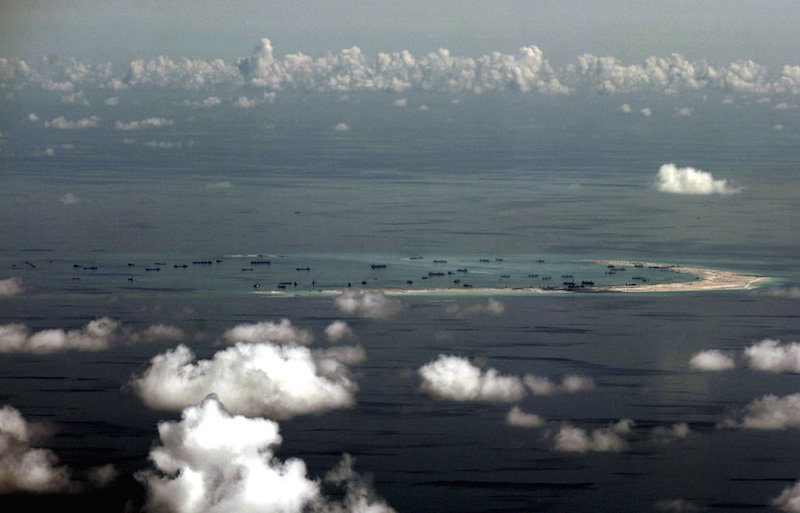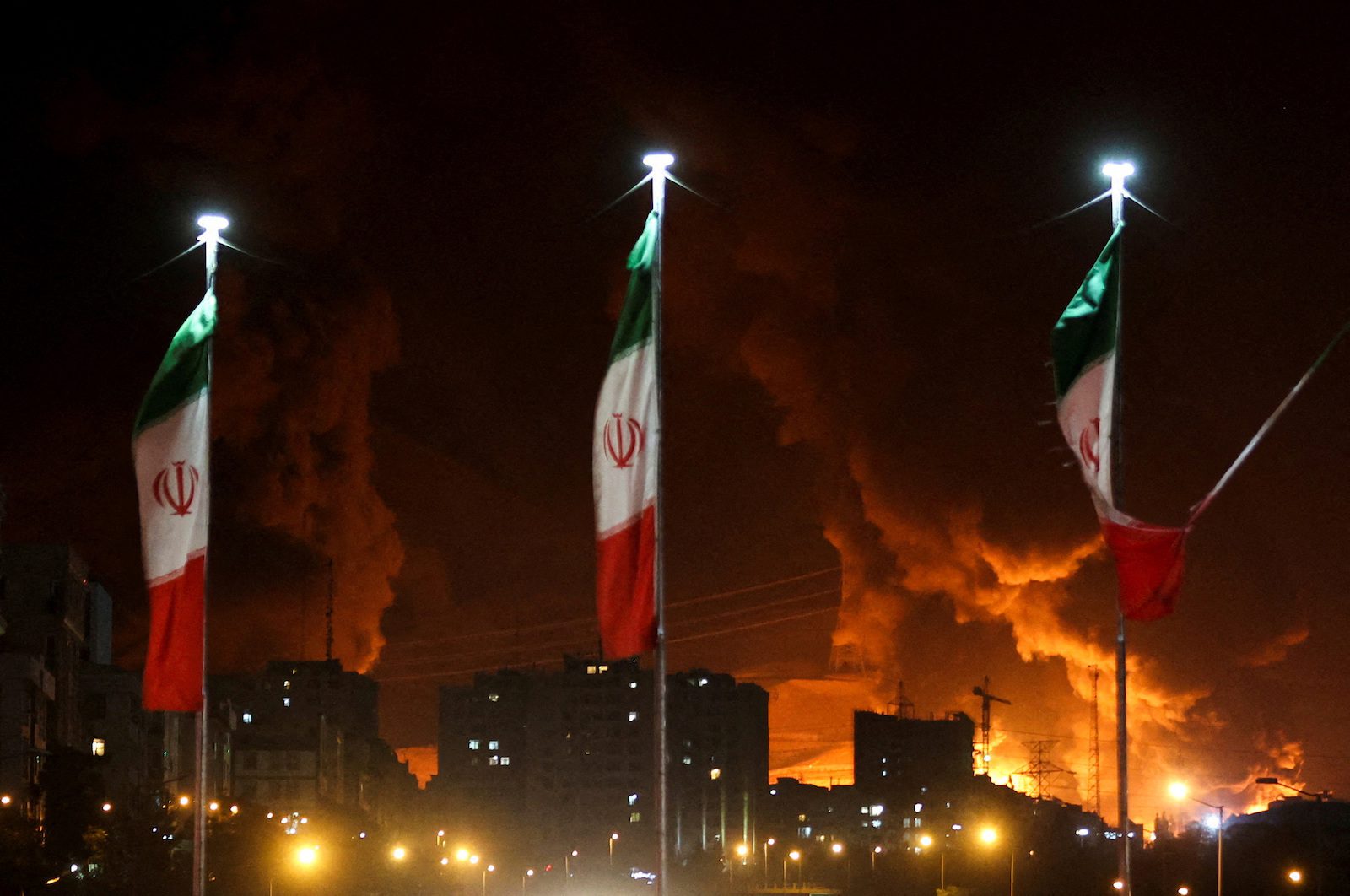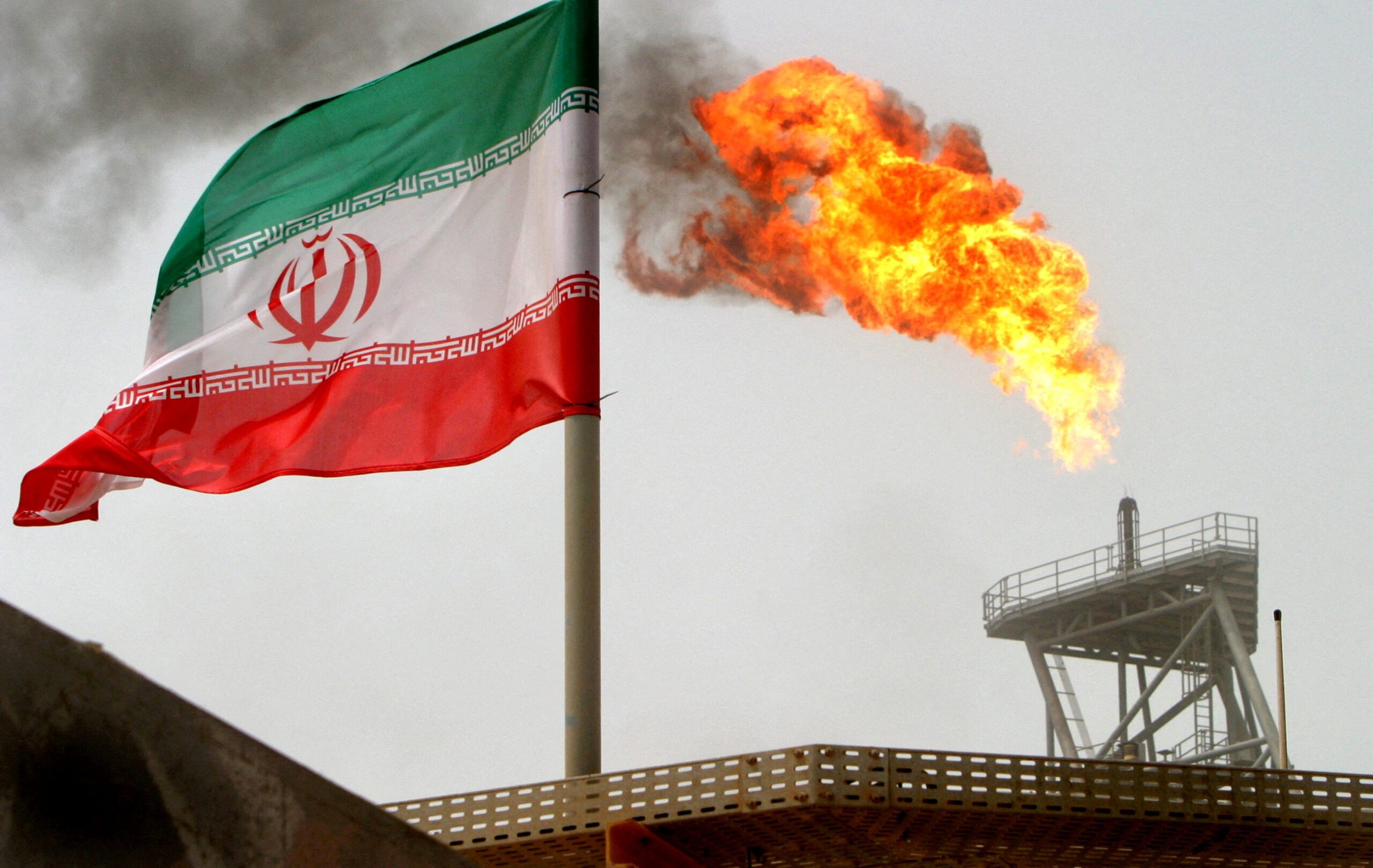An aerial photo taken through a glass window of a Philippine military plane shows the alleged on-going land reclamation by China on mischief reef in the Spratly Islands in the South China Sea, west of Palawan, Philippines, in this May 11, 2015 file photo. REUTERS/Ritchie B. Tongo/Pool/Files

By David Tweed (Bloomberg) — China has landed a military plane on the last of its three airstrips in the disputed South China Sea, a Washington-based research institution said, amid renewed complaints about the country expanding its military presence in the busy shipping lane.
The Asia Maritime Transparency Initiative said satellite images from April 28 showed the first confirmed deployment of a military aircraft — a Shaanxi Y-8 transport plane — on Subi Reef. The structure hosts one of three runways China has built as part of a massive dredging and reclamation operation in the Spratlys chain since 2013, and was the last of three where military aircraft had been observed.
“This should be particularly concerning to the Philippines,” AMTI, a unit of the Center for Strategic and International Studies, said on its website. About 100 Philippine civilians and a small military garrison are stationed on the Thitu islet, about 12 nautical miles away from Subi.
The Chinese Ministry of Foreign Affairs said it wasn’t aware of situation described by AMTI. “China’s peaceful construction activities on the Spratly Islands, including the deployment of necessary homeland defense facilities, is necessary to protect sovereignty and national security,” the ministry said in an emailed response to questions. “It is an absolute right a sovereign country enjoys and it doesn’t target any country.”
China claims more than 80 percent of the South China Sea, a $5 trillion-a-year shipping route where five other countries including the Philippines and Vietnam also have claims. Regional concerns about China’s presence in the area reemerged earlier this month after the foreign ministry confirmed reports that the People’s Liberation Army had installed missile systems on Subi, Mischief Reef and Fiery Cross, where it has military-grade airstrips.
U.S. Warning
Chinese military aircraft have previously landed on other Chinese structures in the Spratlys, AMTI said. The first was a naval patrol aircraft — possibly a Y-8 — that landed on Fiery Cross in April 2016 to evacuate three people who had fallen ill. The Philippine Daily Inquirer last month published an aerial photo dated Jan. 6 showing two Xian Y-7 military transport aircraft on Mischief Reef.
China has installed anti-ship cruise missiles and surface-to-air missile systems on Subi Reef, Mischief Reef and Fiery Cross, CNBC reported earlier this month. Chinese foreign ministry spokeswoman Hua Chunying defended the move, saying the deployment was necessary to protect China’s sovereignty.
White House Press Secretary Sarah Huckabee Sanders warned that there would be “near-term and long-term consequences” of China’s militarization of the waters. Australia’s Foreign Minister Julie Bishop said any military build-up would run counter to China’s commitments, in an apparent reference to Chinese President Xi Jinping’s in 2015 pledge not to militarize the structures.
The U.S. Navy regularly performs “freedom of navigation” cruises near to China’s man-made features to demonstrate the right to sail through what it considers to be international waters.
“We’ll fly, sail and operate here in the next 12 months, just like we have in the past 12 months,” Vice Admiral Phillip G. Sawyer, commander of the U.S. 7th Fleet said Thursday in an interview in Singapore. China’s militarization of the artificial structures ran counter to the country’s promises, he said.
Vietnam asked China to remove the military equipment deployed on its features in the Spratly Islands, Vietnam News reported Wednesday, citing Le Thi Thu Hang, spokeswoman for its foreign ministry. Hang said the placement of the missiles violated Vietnam’s sovereignty.
“If not already clear, China’s installation of anti-ship cruise missiles, surface-to-air missiles, and electronic jamming equipment in the Spratly Islands is indication that it has every intent of enforcing its maritime claims,” said Felix Chang, a senior fellow at the Foreign Policy Research Institute in Philadelphia.
Last month, Xi showed off his growing South China Sea military might, presiding over the country’s largest-ever fleet review. Xi observed 48 vessels, 76 aircraft and more than 10,000 service personnel at the naval hub of Sanya.
© 2018 Bloomberg L.P

 Join The Club
Join The Club











